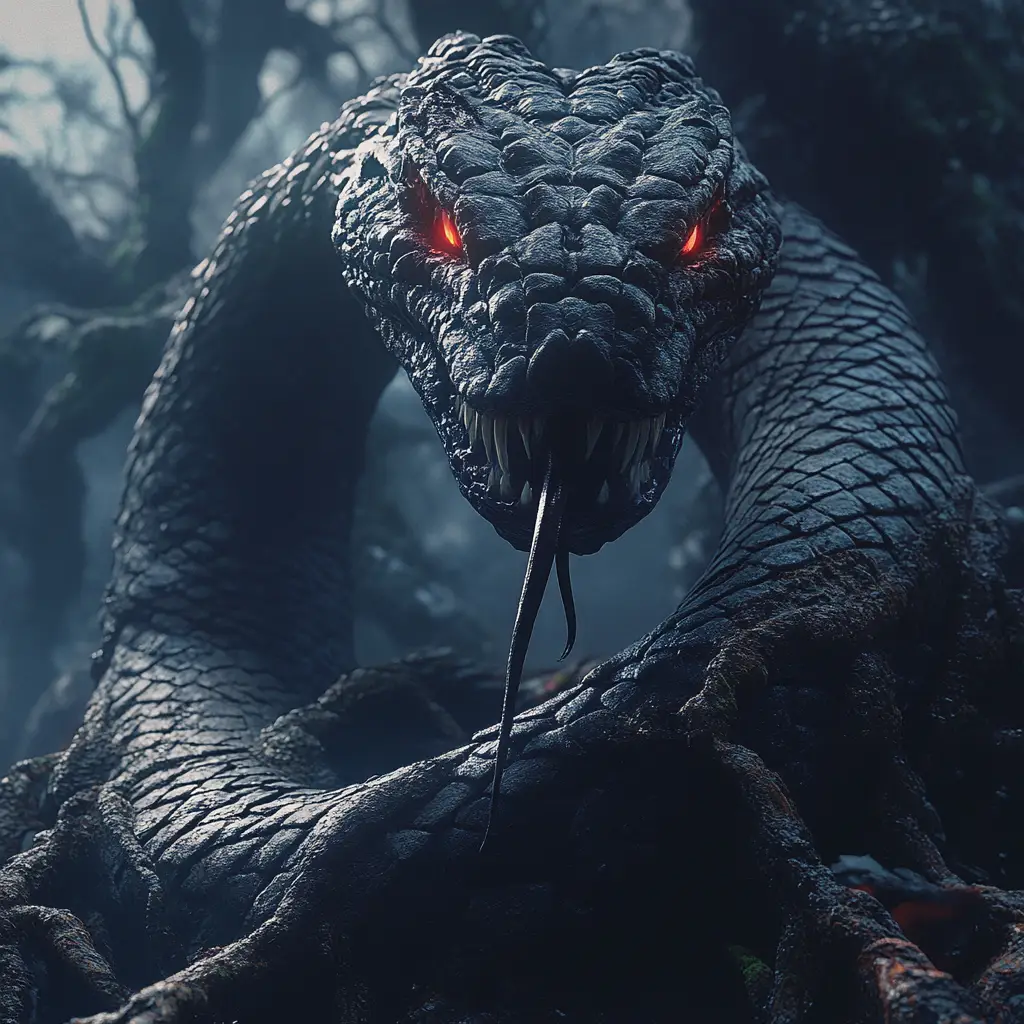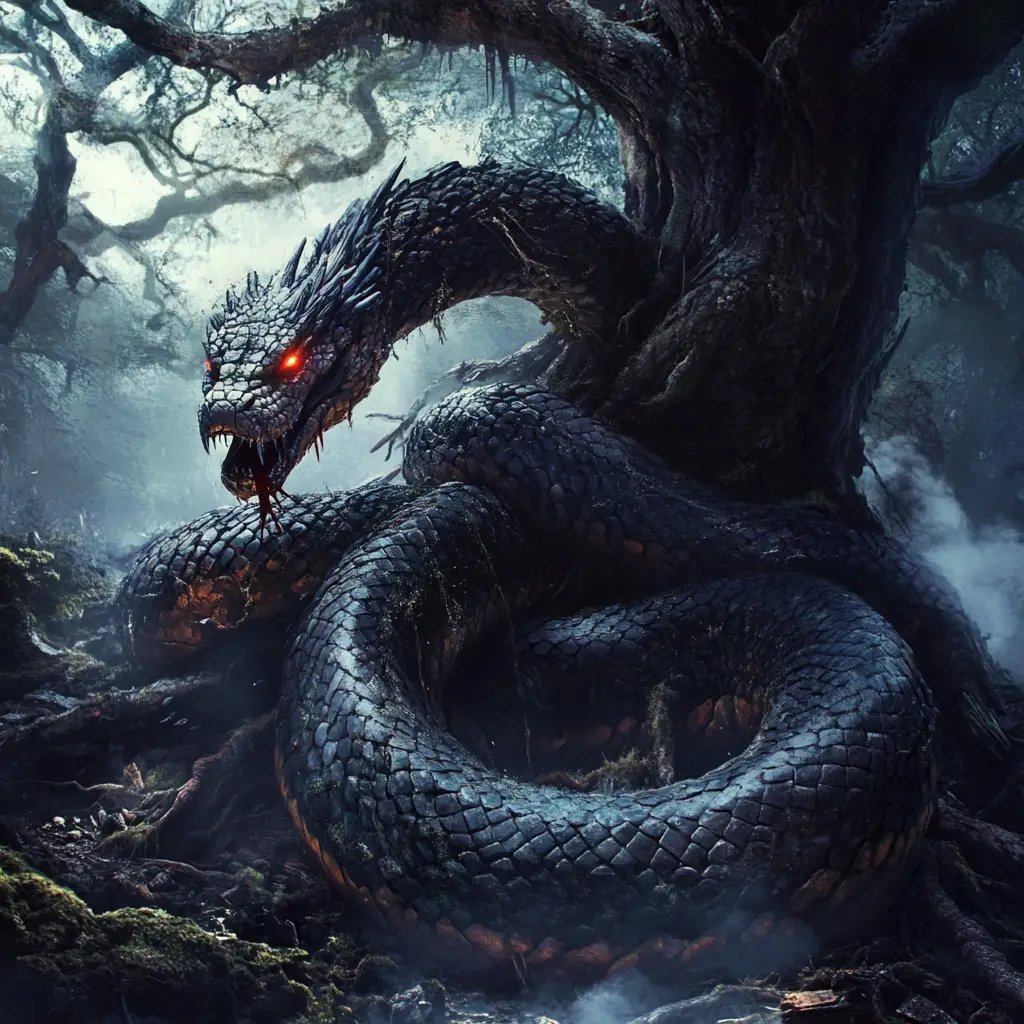Níðhöggr – The Malice Striker of Norse Mythology
Níðhöggr, often translated as “Malice Striker” or “Dread Biter,” is one of the most feared and enigmatic creatures in Norse mythology. A colossal, serpent-like dragon, Níðhöggr resides at the roots of Yggdrasil, the World Tree, constantly gnawing at its foundations. This creature embodies decay, chaos, and the cyclical nature of life and destruction in the Norse cosmos.
Appearance and Characteristics
Níðhöggr is depicted as a massive, serpentine dragon with dark, scaly skin and jagged spines along its back. Its glowing red eyes and venomous fangs reflect its malevolent nature. As it chews on the roots of Yggdrasil, it spreads corruption and threatens the balance of the nine realms connected by the World Tree.
Role in Norse Mythology
The Devourer of Yggdrasil
Níðhöggr is infamous for gnawing on the roots of Yggdrasil. This act symbolizes the inevitable decay and entropy that challenge the world’s order. Despite its destructive nature, Níðhöggr plays a necessary role in the cycle of creation, destruction, and renewal.
Tormentor of the Wicked
In the grim afterlife hall of Náströnd, Níðhöggr is said to feed on the bodies of oath-breakers, murderers, and other sinners. This depiction solidifies its association with punishment and moral retribution in Norse cosmology.
Ragnarok
Though not explicitly central to the events of Ragnarok, Níðhöggr’s continuous decay of Yggdrasil aligns with the themes of inevitable destruction and rebirth, contributing indirectly to the cycle of the world’s end and renewal.
Symbolism of Níðhöggr
Decay and Corruption: Níðhöggr represents the forces that wear down even the most stable and sacred structures, such as Yggdrasil.
Justice and Punishment: As the devourer of sinners in Náströnd, it symbolizes retribution and the moral consequences of one’s actions.
Cyclical Nature of Life: Its destructive actions are part of the greater cycle of death and renewal, echoing the Norse understanding of existence.



